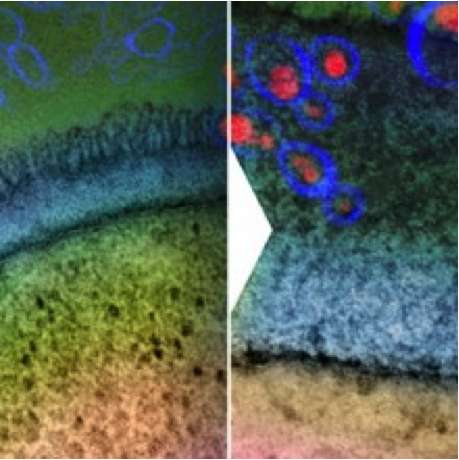Study identifies, characterizes lipid accumulation pathways

With the increasing emphasis on sustainable energy sources, biofuels derived from animal or plant lipids—oils and fats—have been proposed as a promising substitute for fossil fuels. In particular, the yeast species Yarrowia lipolytica has strong potential as a biofuel-producing organism because it accumulates large amounts of lipids, but little is known about the key biological processes involved.
To address this gap in knowledge, Pacific Northwest National Laboratory researchers performed the first comprehensive metabolomics and lipidomics study on Y. lipolytica to characterize metabolic processes associated with lipid accumulation in the yeast species. They identified and characterized major pathways involved in lipid accumulation from glucose in Y. lipolytica.
"Yarrowia is a great organism with which to be working—it is genetically tractable, has a sequenced genome and produces lipids that are great biofuel precursors," said Dr. Scott Baker, a PNNL biologist who led the study.
Their findings provide important insights into optimal timing and nutrient conditions for harnessing lipids from yeast. Moreover, the new comprehensive dataset describing lipid accumulation in Y. lipolytica will enable more detailed experiments to provide specific genetic targets for future metabolic engineering efforts.
This study sets the stage for efforts to engineer yeast to optimize lipid accumulation and maximize the yield of carbon-based products. Because lipids from Y. lipolytica have chemical properties similar to those of diesel fuel, they can be readily used as biodiesel using current vehicles and existing infrastructure at gas stations. For this reason, harnessing lipids from Y. lipolytica will accelerate the development of practical approaches for transitioning more quickly to a biofuel-based energy system.
"With a basic understanding of lipid biosynthesis in this organism, we hope to be able to come up with strategies for increasing its productivity," said Dr. Kyle Pomraning, a PNNL postdoc who is first author on the research paper that appeared in PLoS One.
The team profiled lipids using analytical chemistry techniques and monitored changes in cell shape using capabilities in the Quiet Wing at EMSL, a Department of Energy national scientific user facility located at PNNL. They found lipids accumulated rapidly and peaked at 48 hours during the five-day experiment, concurrent with altered amino acid metabolism. Accumulation of lipids to their maximum level occurred when cells began to synthesize amino acids in the presence of excess glucose-the major carbon source in the culture medium. However, the highest proportion of a biofuel-friendly lipid occurred at 24 hours, suggesting the biofuel quality of the lipids was highest prior to peak lipid accumulation.
By 72 hours, the cells with depleted glucose levels began to make thicker cell walls, possibly to protect themselves until they could find more favorable environmental conditions. From the perspective of a bioengineer interested in converting glucose input into lipid output, the development of a thicker cell wall under starvation conditions represents wasted carbon that would otherwise be used for lipid production. Therefore, genes involved in cell wall synthesis could be promising targets to improve the efficiency of lipid producing yeast strains.
"We are currently generating genetic and multi-omic analysis of Y. lipolytica lipid biosynthesis induction so that we engineer the organism to be a more efficient production host," said Baker.
More information: Kyle R. Pomraning et al. Comprehensive Metabolomic, Lipidomic and Microscopic Profiling of Yarrowia lipolytica during Lipid Accumulation Identifies Targets for Increased Lipogenesis, PLOS ONE (2015). DOI: 10.1371/journal.pone.0123188
Journal information: PLoS ONE
Provided by Pacific Northwest National Laboratory


















